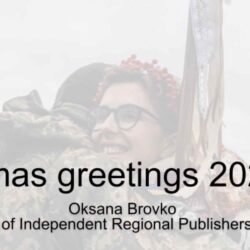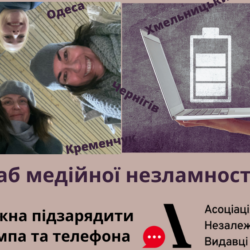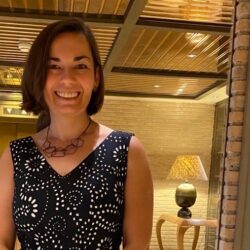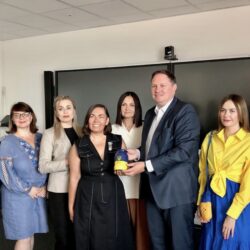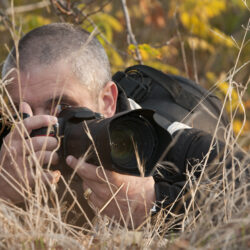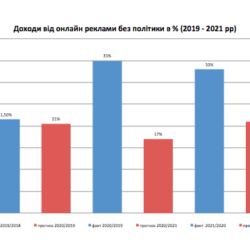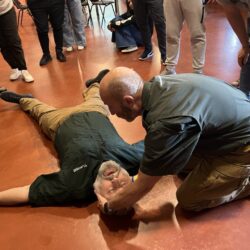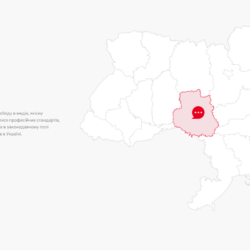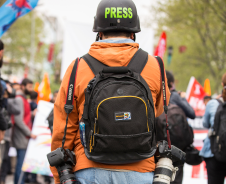Many of Chernihiv’s residents and guests have noticed and admired the beauty of its ancient wooden houses. Not everyone knows that a team of volunteers headed by Stanislav Ivashchenko is in charge of their preservation and restoration. Today, we spoke with Stanislav, an ambitious, kind, and decent Chernihiv resident, who charms with his love and selfless activities aimed at the renaissance of his native Chernihiv. We talked about the “Wooden Lace” project, the city and its restoration, volunteering and helping others, education, and even about the city authorities and self-government bodies. Please read about it all in this great interview.

“I got fed up with seeing that what we, the residents of Chernihiv, possess collectively, that piece of culture that makes our city interesting, unique, and attractive, is reduced to nothing.”
– Stanislav, what can throw you off balance? What do you have zero tolerance for?
– There are several things. I would say human stupidity. I love intelligence. It is not easy to give a specific example now. Of course, the level of low brightness can be completely different. And this does not mean that any manifestation of banal illiteracy drives me crazy. But sometimes, people do things that are a little difficult for me to accept.
And another thing that drives me crazy is when people do not respect personal boundaries and when the level of personal arrogance is so high that a person does not understand where his or her rights end and the next person begins.
– When did you come up with the idea to start the “Wooden Lace” project?
– This is a good question. I would say that it was around the end of 2017 – the beginning of 2018. Probably, the beginning of 2018. It was winter. I do not remember what the main incentive was, but I just had enough. I got fed up with seeing that what we, the residents of Chernihiv, possess collectively, that piece of culture that makes our city interesting, unique, and attractive, is reduced to nothing.
Because on the one hand, the city authorities do nothing to preserve the historical face of Chernihiv; on the other hand, the residents of Chernihiv do not care much about the fact that if they, for example, live in a building that has a particular architectural or historical value, then, even though it is their private property, it is also the collective property of our community to a certain extent, because this all, as I always say, shapes our environment. And we have to protect this environment and take personal responsibility for it.
– And where did you get your love for wood, for lace? Why this project and not another, why houses?
– But I wouldn’t say that I have any specific love for wood. I love brick architecture, too. The only question is that in my eyes. As a person who has travelled around the world quite a lot, including Ukraine, I believe that wooden houses are something that is purely ours. So they must be protected, preserved and, if possible, restored.
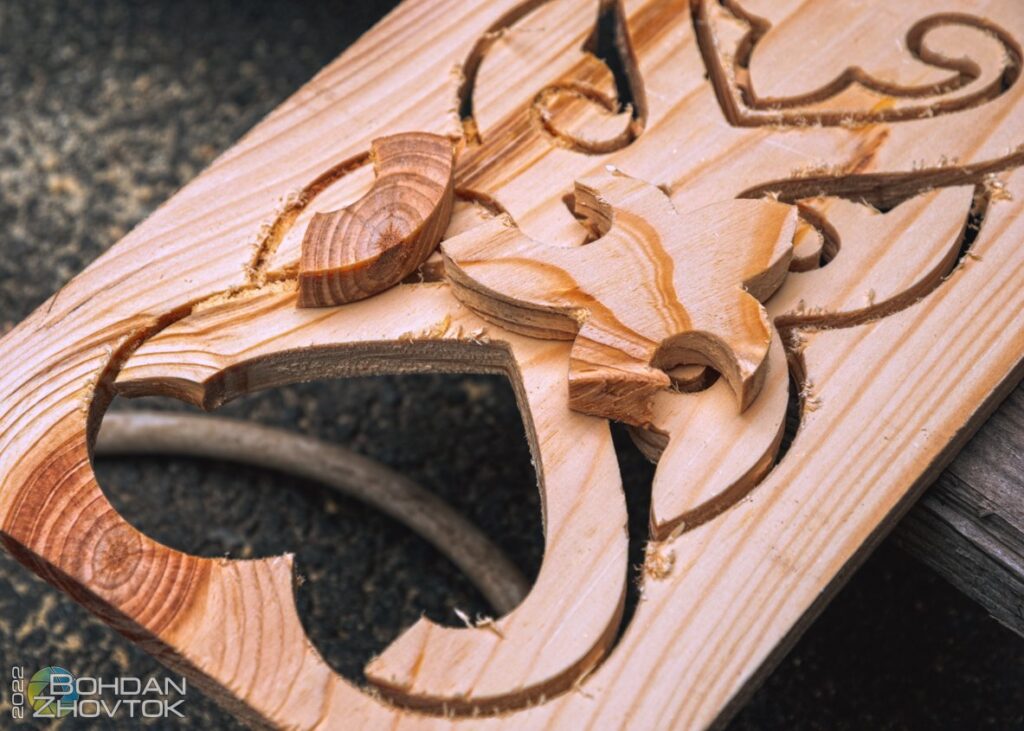

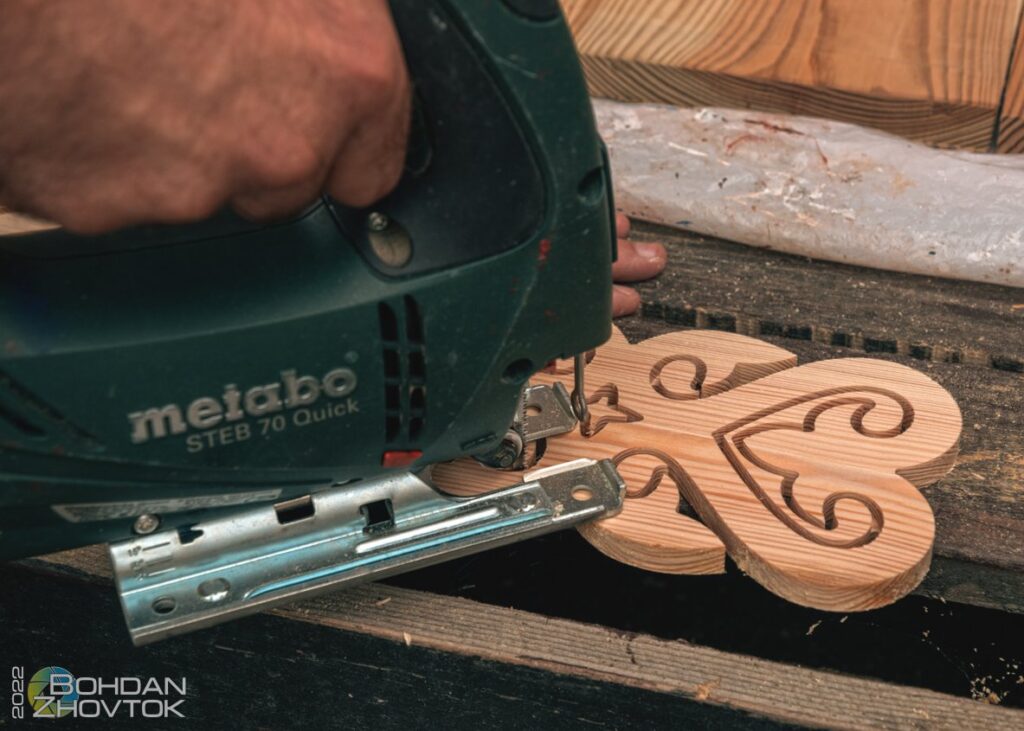

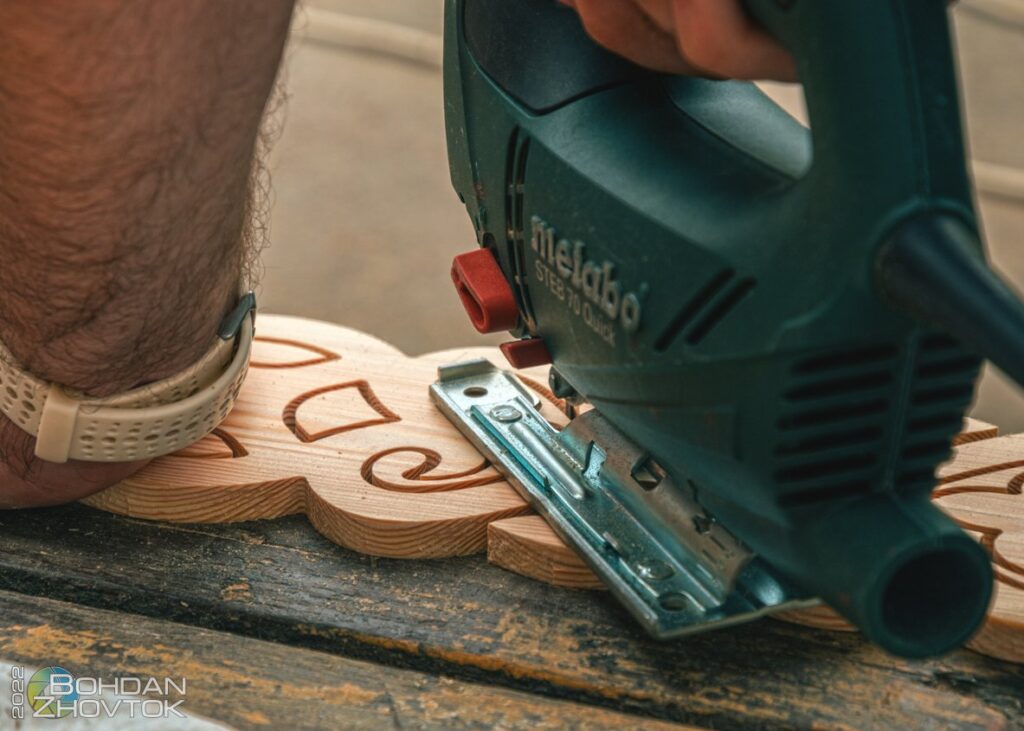

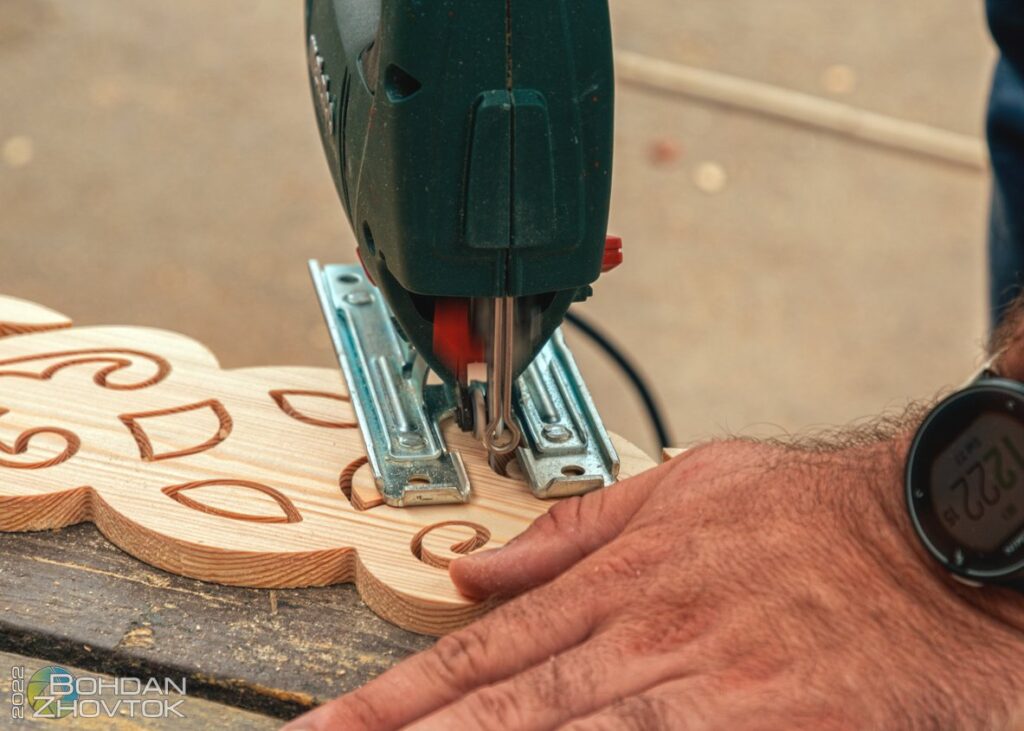

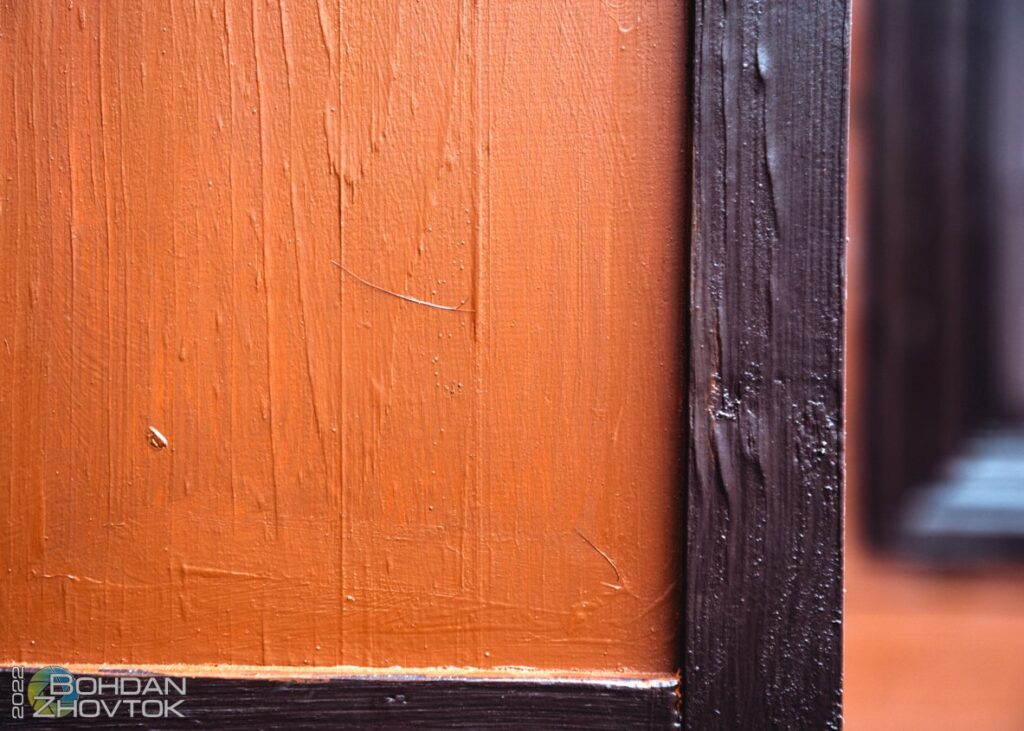

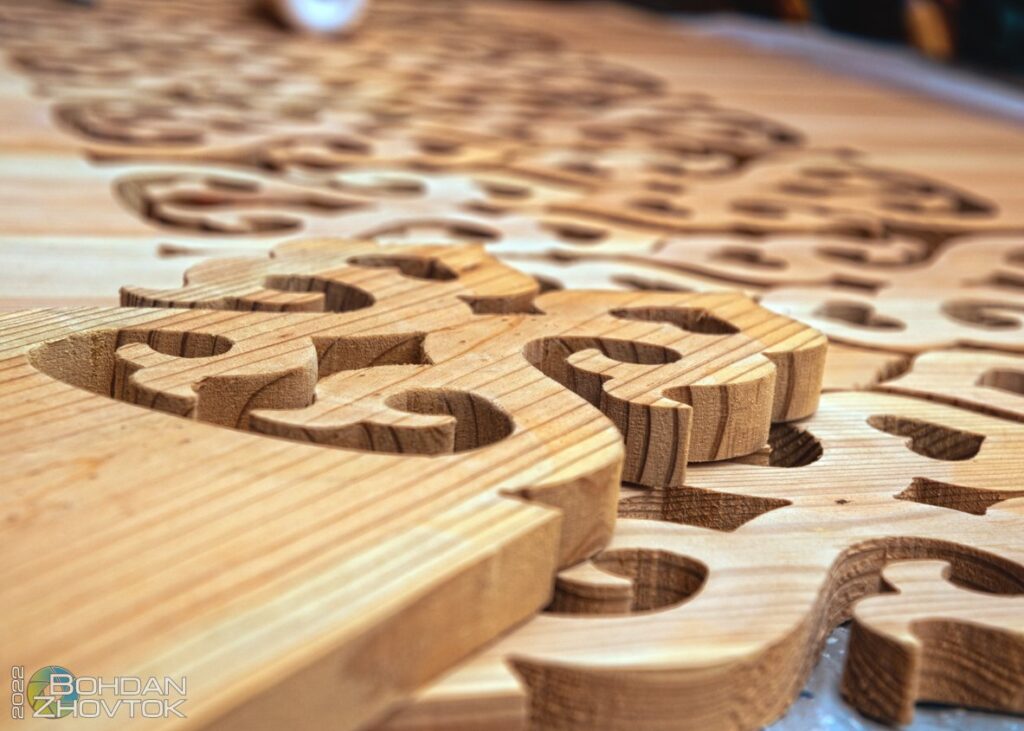

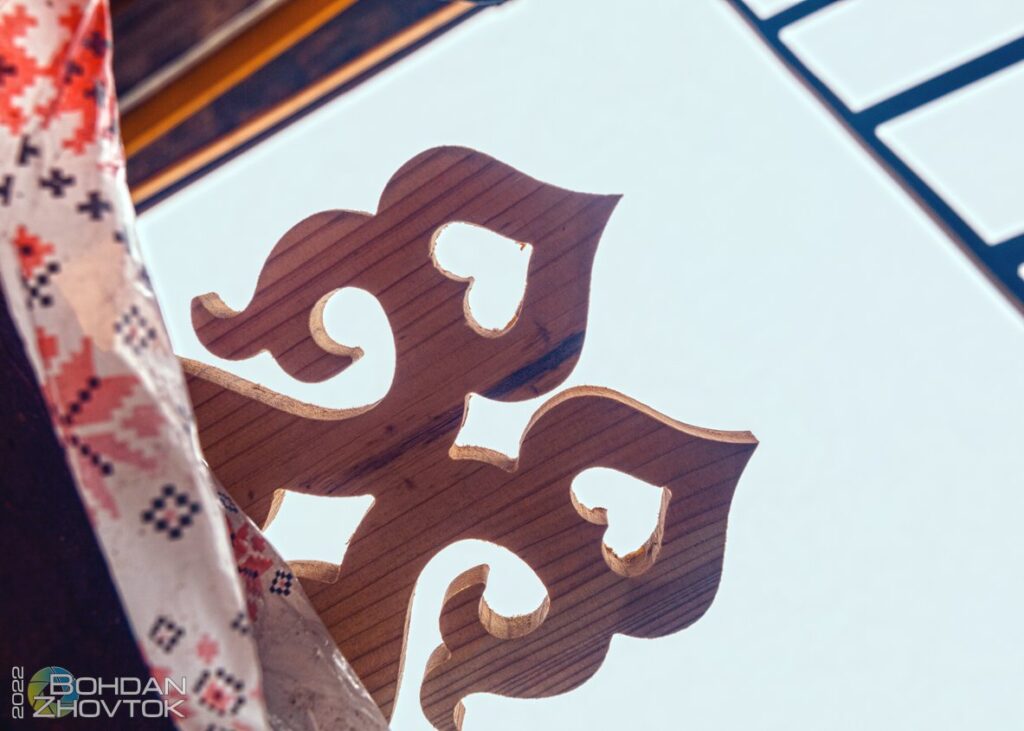

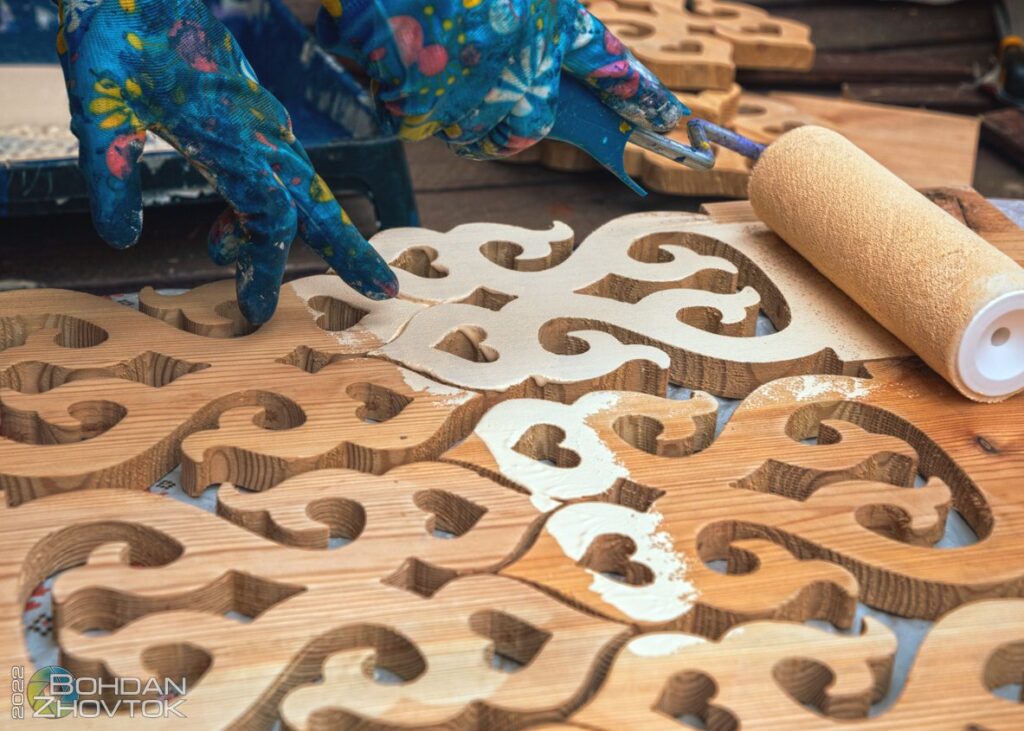

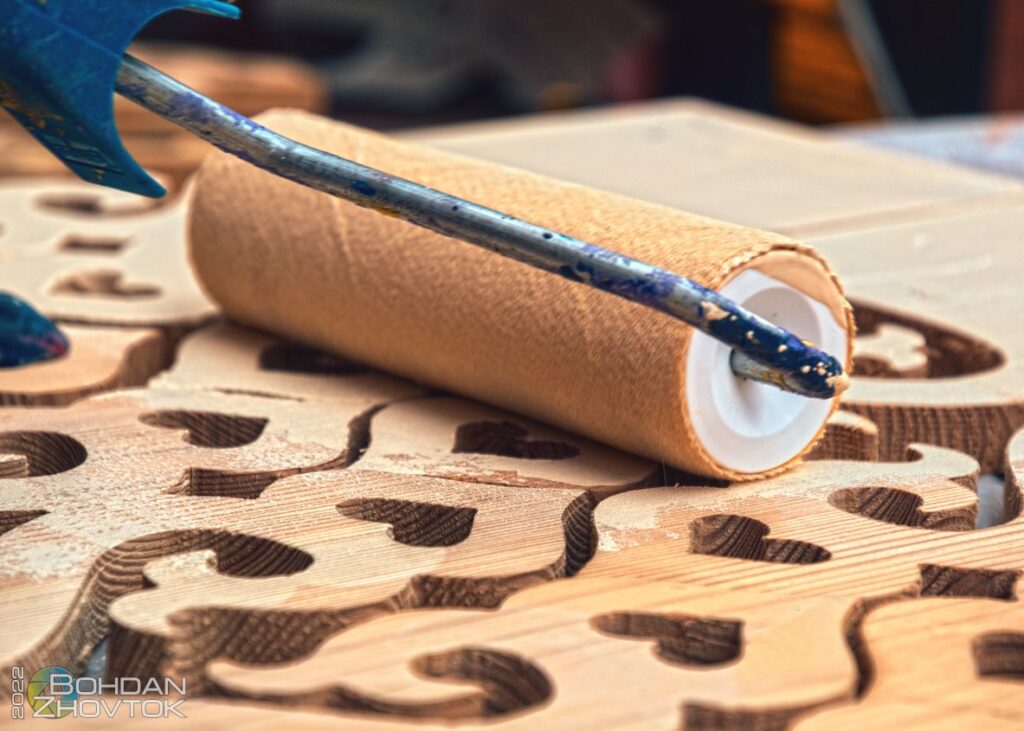

– What are the main symbols used in our wooden lace? And are there any symbols that are purely typical of Chernihiv?
– I will probably start with the last one, about symbols purely typical of Chernihiv. I personally do not know them. There is a house that, in my opinion, depicts Simargles, but that’s just my opinion. Because some other people say that these are not Simargles at all, but some dragon-like chickens, let’s say. But as far as the motifs used in our carvings are concerned, they are standard plant motifs, and they are inherent in wooden architecture anywhere, wherever it is. That is, plants are often depicted on wood. There are various animal ornaments, ranging from domestic animals to birds: pigeons kissing each other. Well, something like that. There are, of course, abstract geometric shapes, which, by the way, still need to be solved. And there are also solar symbols. They symbolize the sun and stars in different ways: five, six, eight, and twelve-angled ones.
– What came first: the online museum of Chernihiv wooden carvings or the reconstruction of buildings and their restoration?
– The museum appeared earlier. I simply did not know how to start saving these houses physically. Therefore, together with my friends, we started with what we could do, which was understandable. In order to create an online museum, you don’t need any specific communication, you don’t become dependent on someone else, and you reproduce. And when you restore a house, you interact directly with its owners, to say the least. In order to create an online museum, you don’t need anyone except the team that will create it. And what it will look like, what it will exhibit, is decided only by you and your team. So we started with virtual preservation.
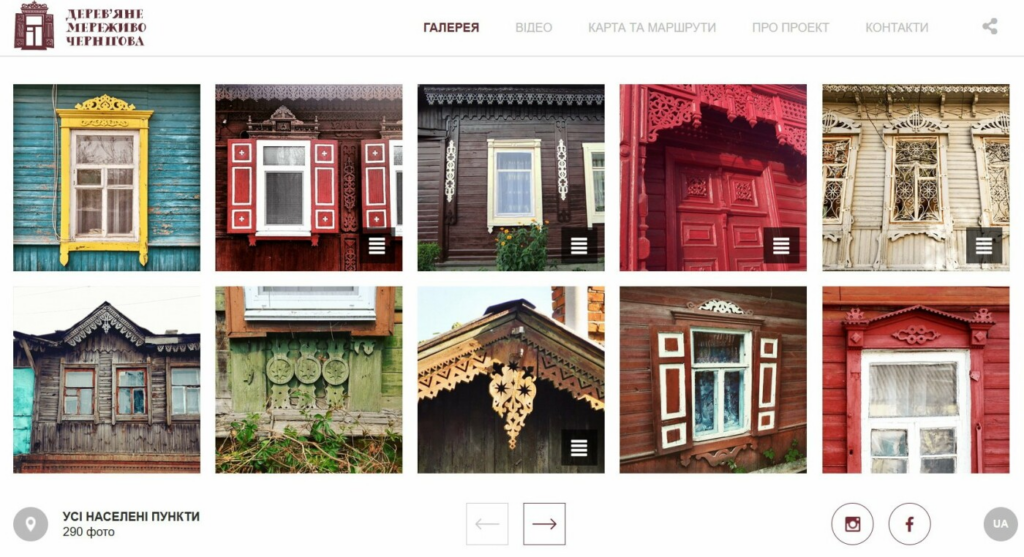
– How much time passed from the museum creation to the beginning of restoration? And what were the difficulties?
– 10 months passed from the start of the museum to the first house. From the moment when we launched the museum, a ready one. And of these 10 months, 5 months were our standard Chernihiv winter. A cold unpleasant period. So it was just necessary to develop, go public somewhere, meet someone, and talk. In this way, our first house emerged. And there were no difficulties at all. It takes a day to collect money for buying an electric jigsaw. Learning to cut: basically the same time. You know, one day we practiced for several hours on the boards used to decorate the fence, which had primitive carvings. Well, we cut it – that’s all, and then we started working with the lace, which was right on the house.
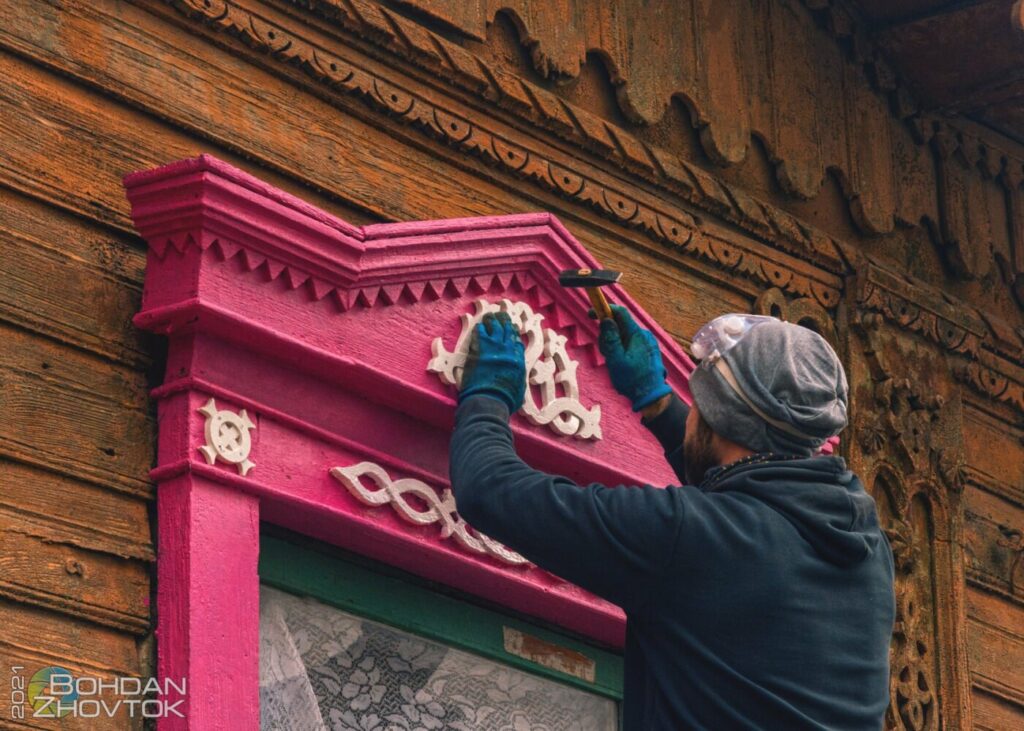
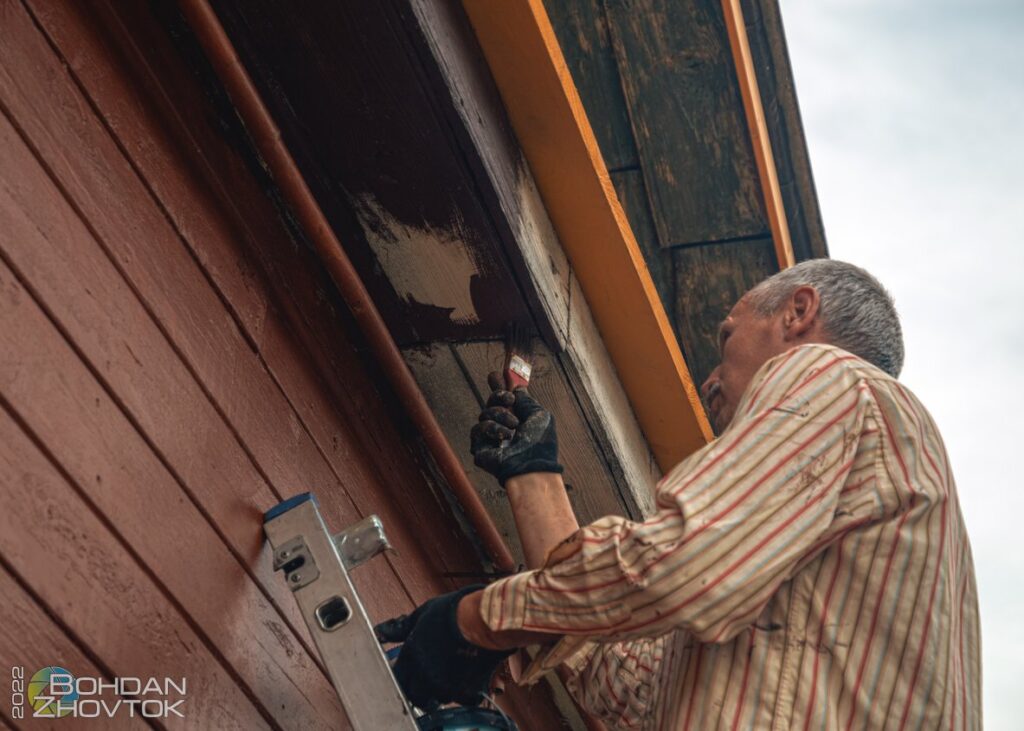

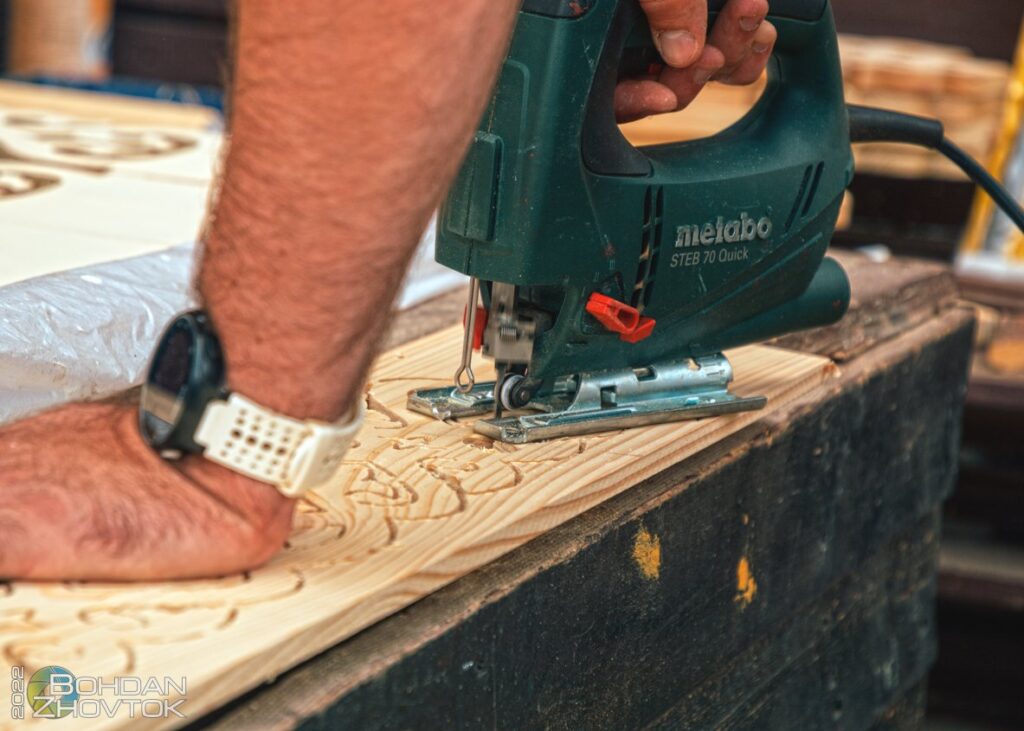

– Ok, you say there were no difficulties. And what about having the owners of the houses give their consent? Did everyone give their consent? How? Did you come and say: “Good afternoon, I’m Stanislav, I want to restore your house”?
– Well. Each house falls into our hands in its own way. There are houses in our project history where we came and said that we could help. And why for free? Because yes, because this is the essence of volunteering. And why should we do it? We want your house to be beautiful, the street to be beautiful. Well, no need to explain. This is banal elementary communication to build bridges with people you don’t know and agree that they will trust you with their facade. It is not as difficult as it is sometimes expensive. And for me personally, this is not the main path that I would like to follow. But this was what we had to go through in order to get to our desired path today.
And our desired way is when you are asked for help. When a project already has a name, people have already seen the video, read the articles, seen the photos, and heard from their neighbours. And then, in fact, they call you, write, and say: “Hello! We have a house!” “Okay, we’re coming”.
– Well, where do you get money from?
– Money comes from the pockets of caring people. There are many good people in Ukraine, and there are also many in Chernihiv. I say “in Ukraine” for a good reason because we are sponsored not only by residents of Chernihiv, but also by people from other cities. And even from other countries. There are Ukrainians who live abroad and still regularly transfer money to us, thus forming the budget of the project. This is usually followed by the question: “And how much does it cost?” It costs, in principle, not much, and it is always very individual, because it depends on the house. It is not much – It can literally cost one thousand to two thousand hryvnias. That is, depending on how much needs to be restored, what size it is and what kind of wood you use. You can use cheap wood, such as pine. We try not to use pine, unless the owner buys it at his or her own expense and prefers pine for one reason or another. We try to use other types of wood that are not as fibrous and do not break as much.
But it’s all lyrics, that’s not the question. The question is the amount and scale of what needs to be restored. And our involvement in general. Because there are projects where we trivially restore a certain number of meters of lace, and that’s all. And then we don’t touch anything else. There are such examples. And there are examples when we clean the entire facade, and if it is not one, we clean two facades, we peel off the old broken lace that cannot be restored. In other words, a completely new one should be installed in its place. Well, it also depends on where the lace is. This affects the complexity of our work.
Plus paint, consumables such as brushes, gloves for volunteers, and protective suits. In case of cleaning, you need protective glasses because it all flies into your eyes. Plus food for volunteers. Because, in my opinion, this is an integral part of any volunteer project: when someone comes to do something for others for free, you should at least thank them, provide working conditions, and make them feel comfortable. And when a person comes to stand there on their feet and hands from morning to night, and over the weekend, then, I believe, it’s a thrill, when you can feed this person, spend time together, talk, make a kind of holiday, and not just use slave labour.
– How much your money have you invested in the “Wooden Lace”?
– Actually, I don’t count money at all. I mean that I don’t count how much it is in total. Because of how many hours of my personal time I consciously took away from my work and invested in Wooden Lace, putting off work for the night, for the weekend, or something else, it is impossible to count. How much petrol I have used for all these trips …
I also contributed my personal funds, but this rarely happens because, in principle, the project budget is almost always available. It is not negative and not equal to zero; it is always positive. As the houses emerge … it’s not a constant flow. Let’s say you have two or three houses a year, depending on the year. There are periods of downtime when the same patrons continue to automatically transfer you two, three, four, five, or ten dollars through Patreon, and when you have 20 of them, then every month you receive, let’s say, 100 bucks. Thus, you have three months of downtime and 300 dollars.
– How many houses have already been restored?
– What is important is that there are two areas of physical work with houses. When you restore the old ones, this is one type of work. When you take a house without lace and decorate it with carvings that were never there, it’s a little different. If you count both, then we are currently working on the eighth house. If we take purely historical, ancient ones where we restored lost lace, then there have been six of them.

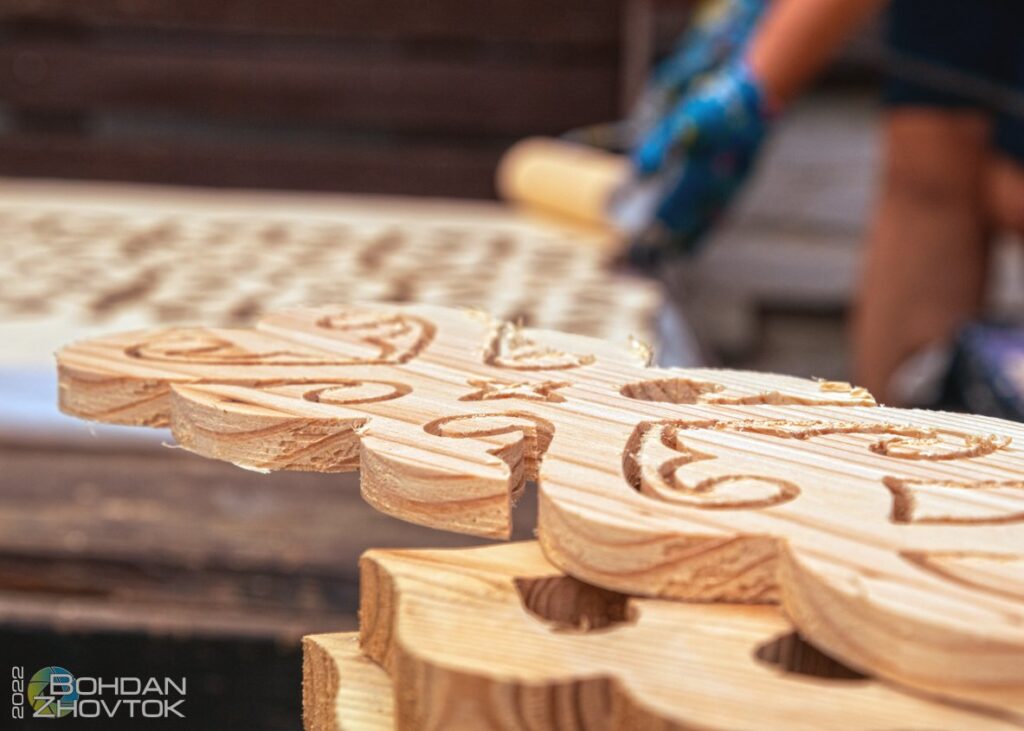

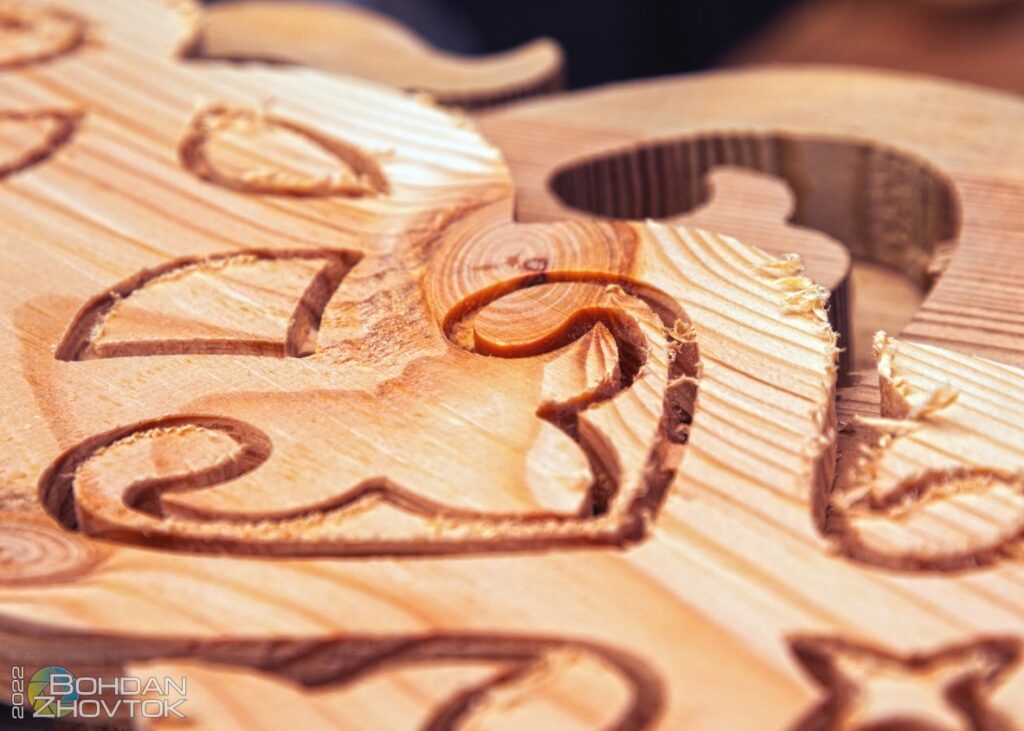
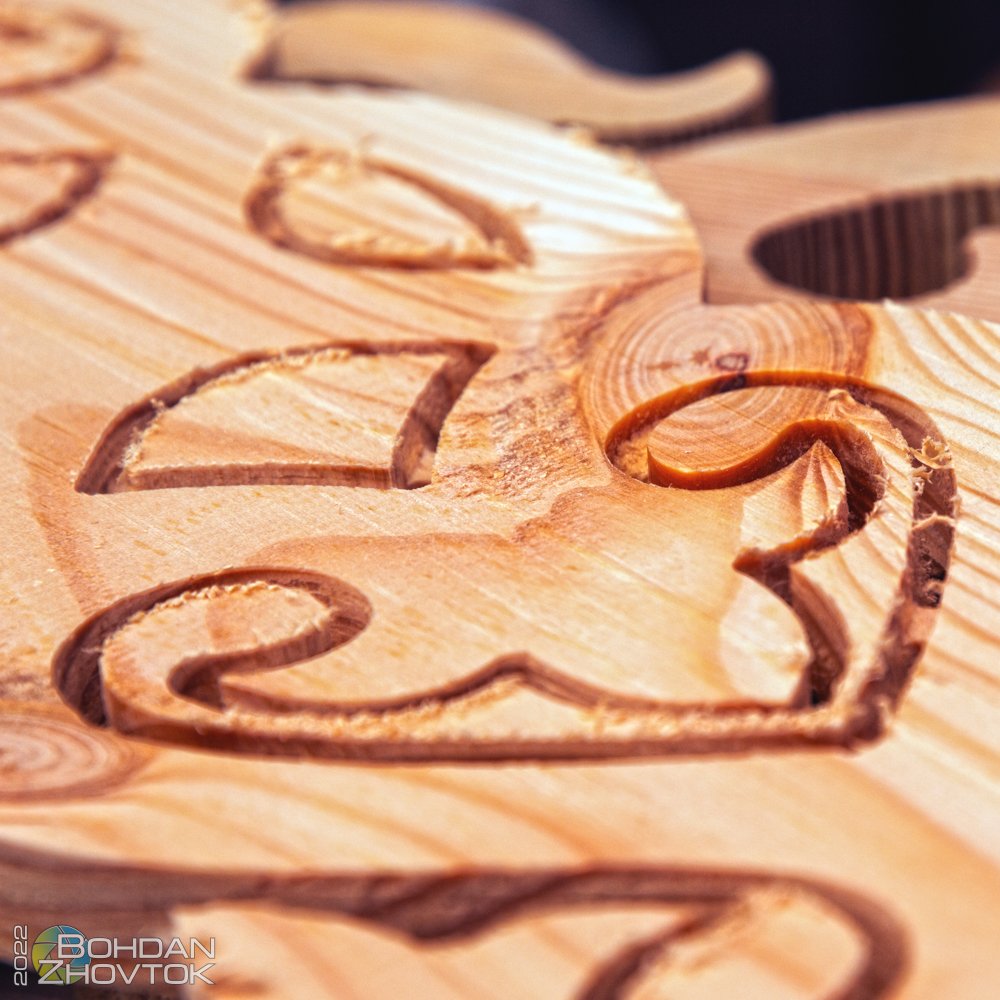
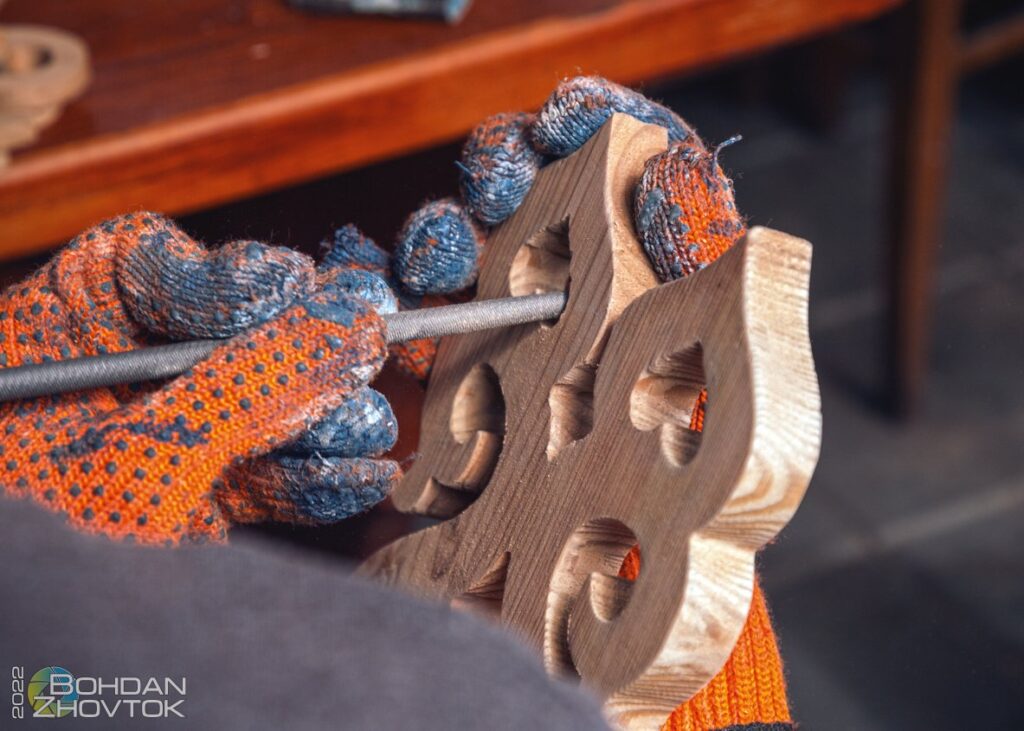
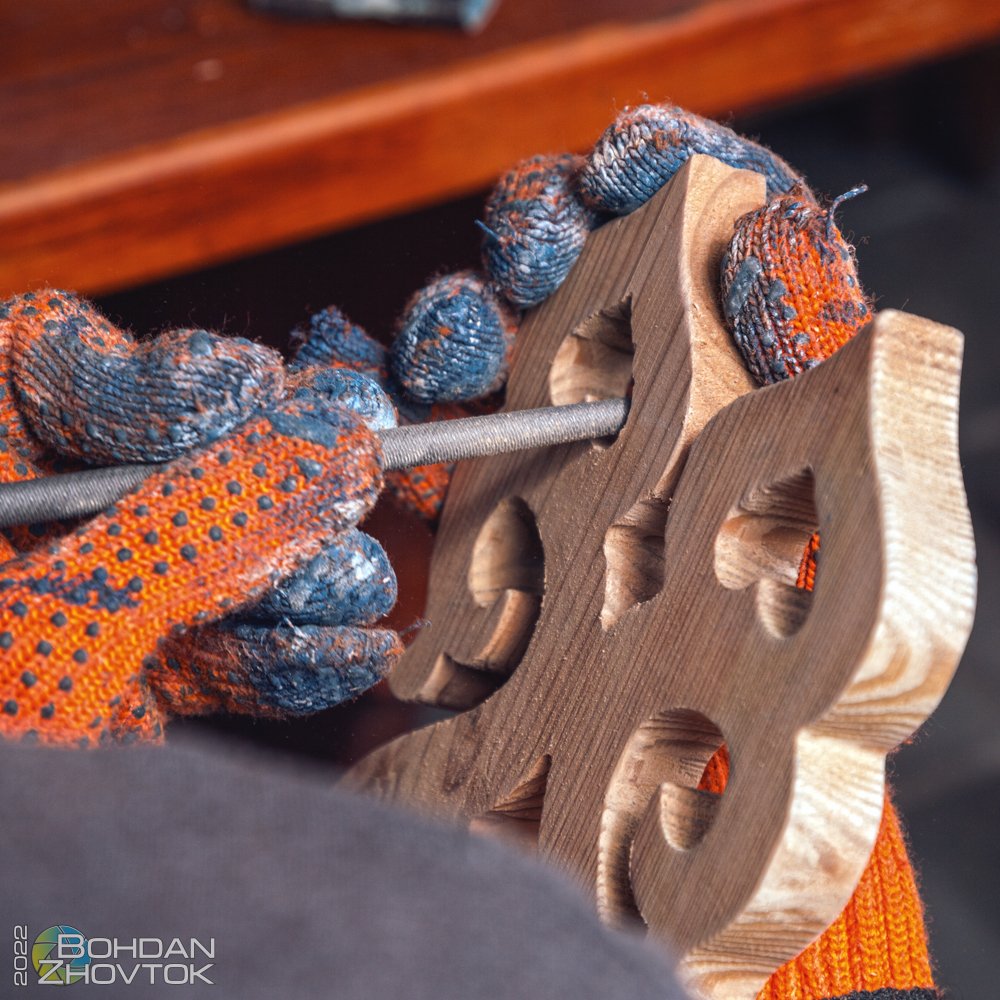
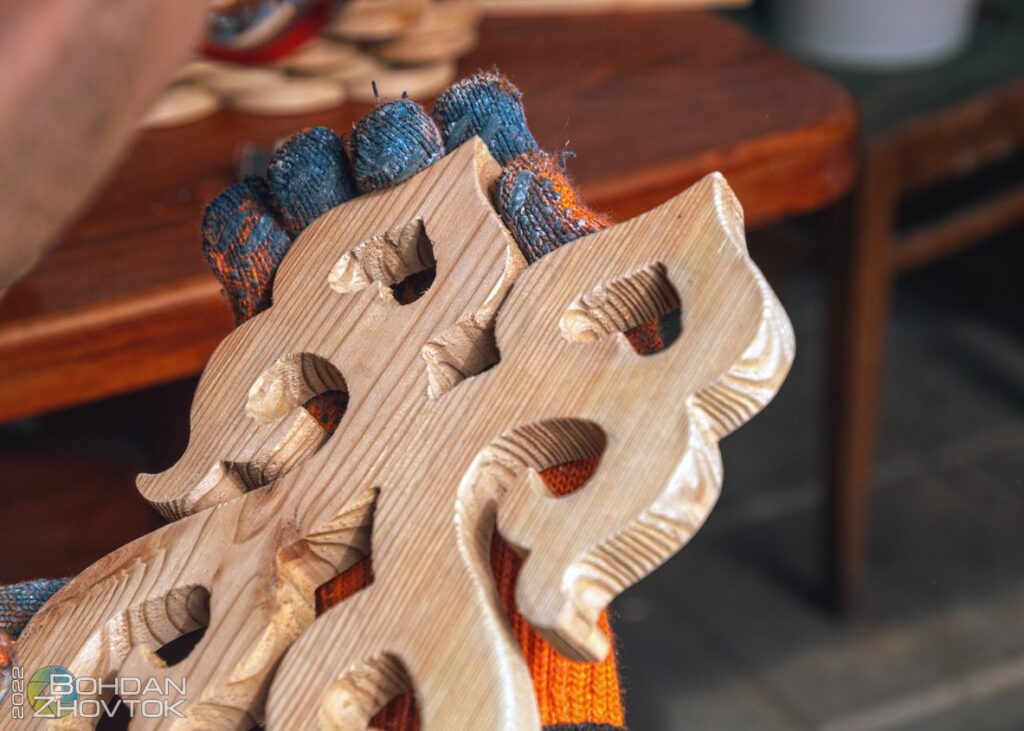
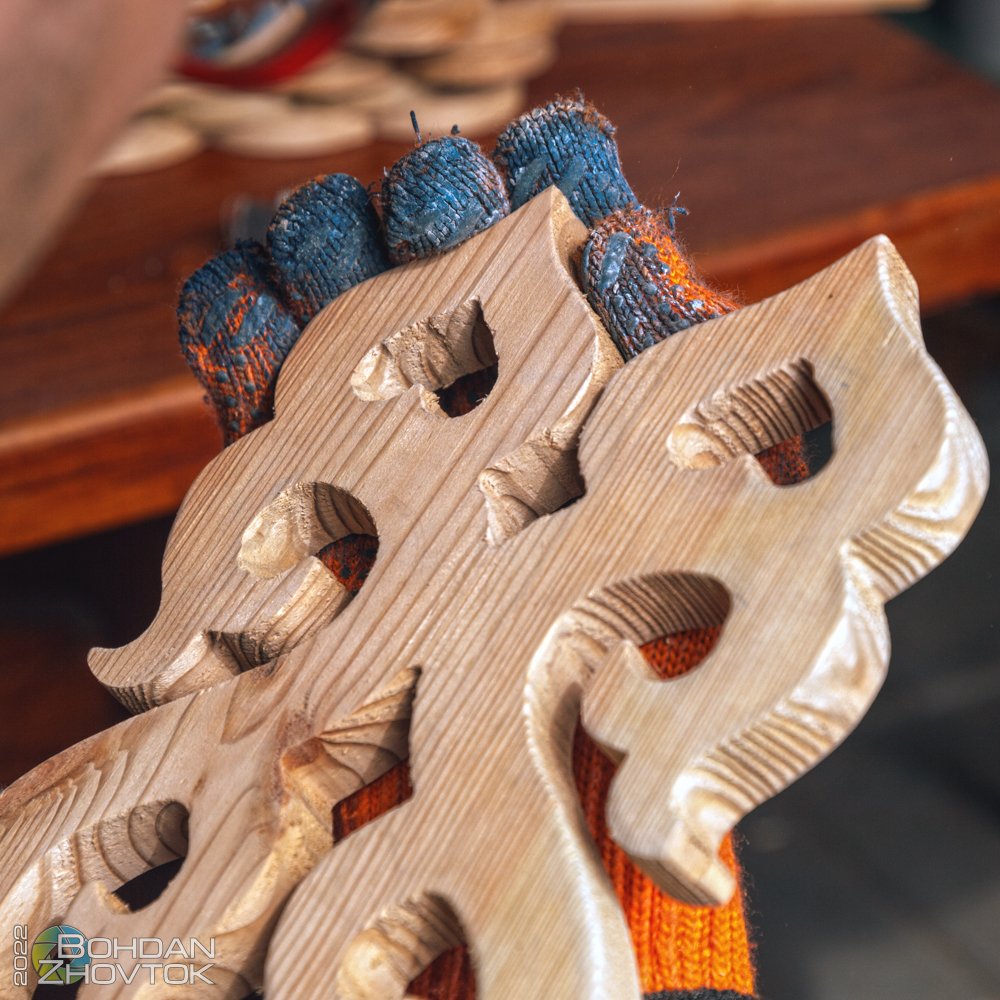
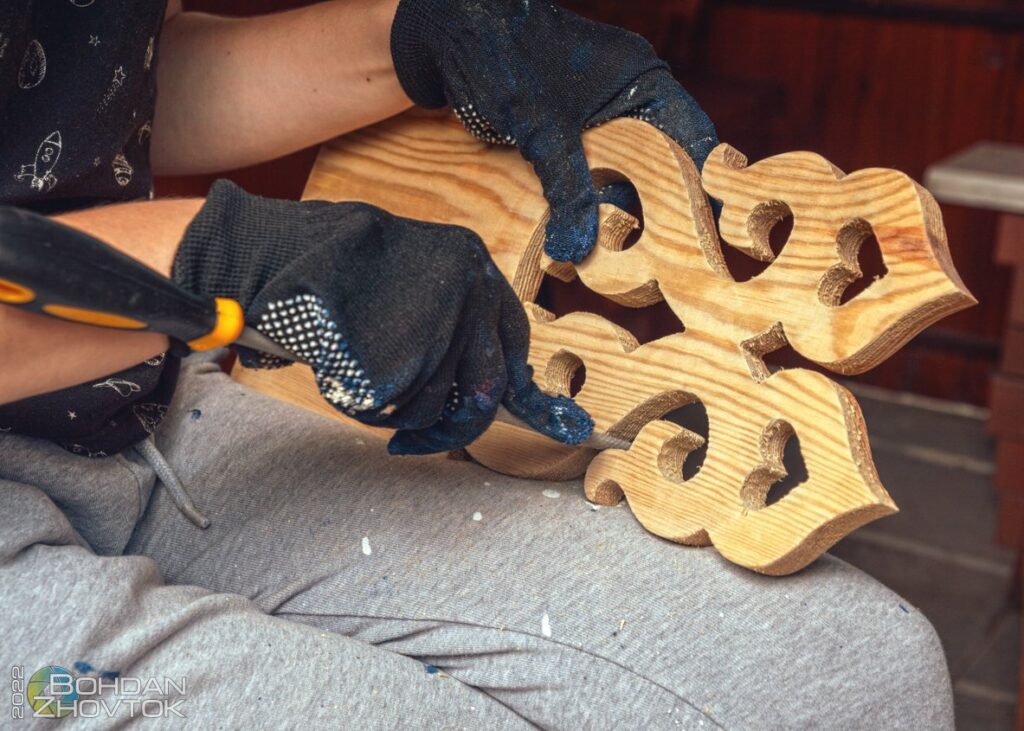

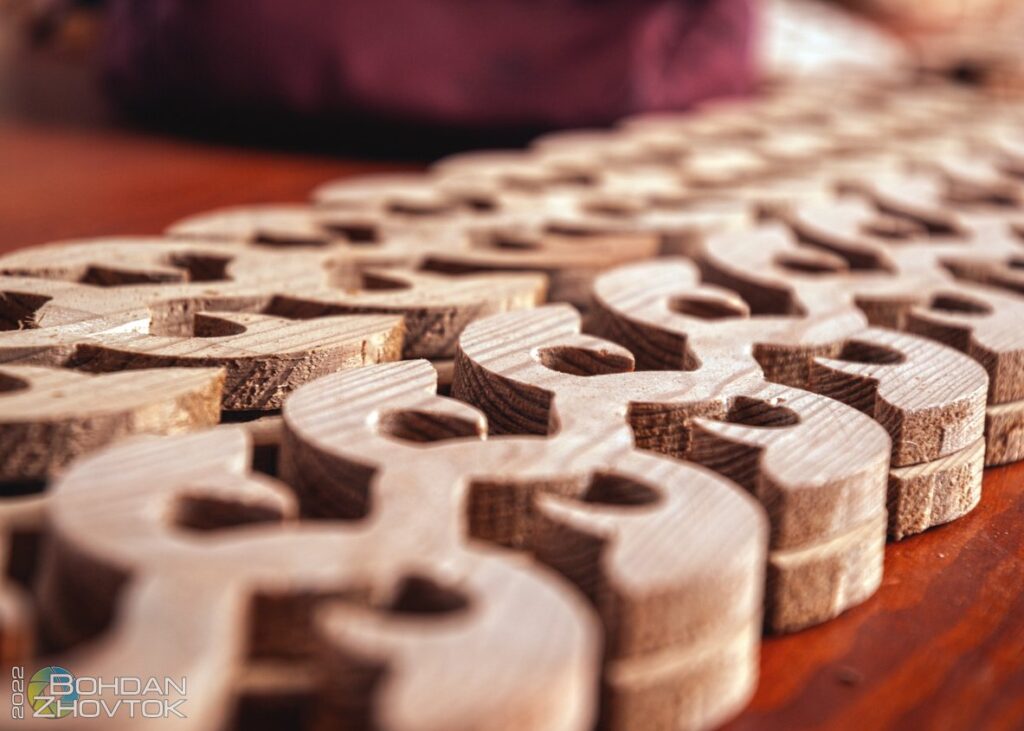

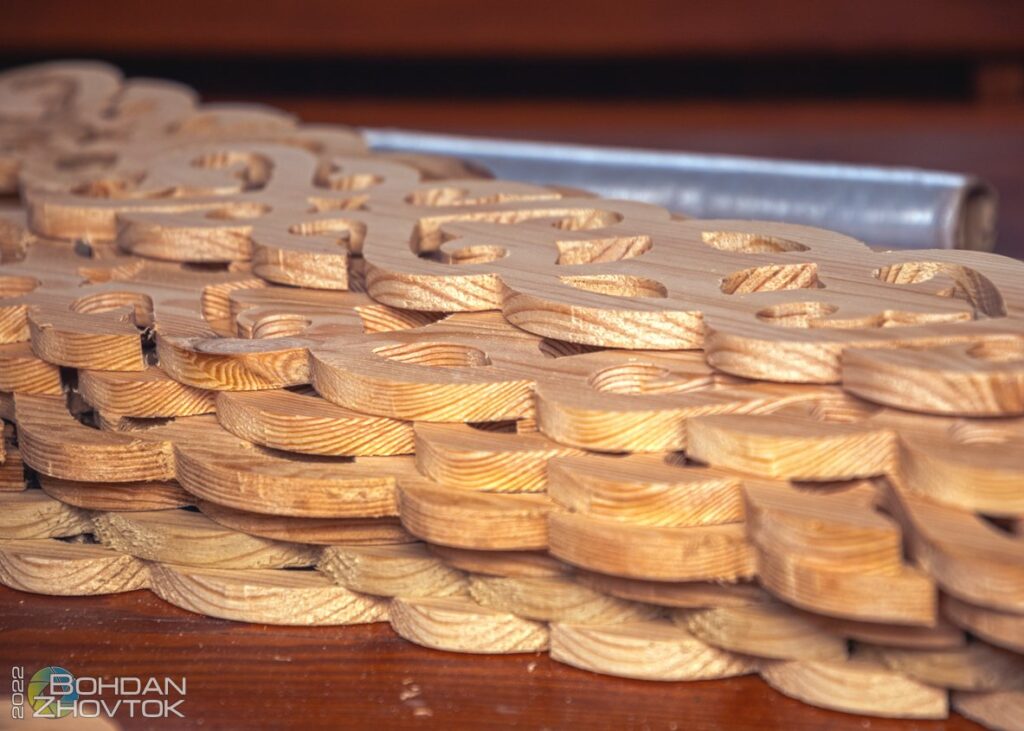

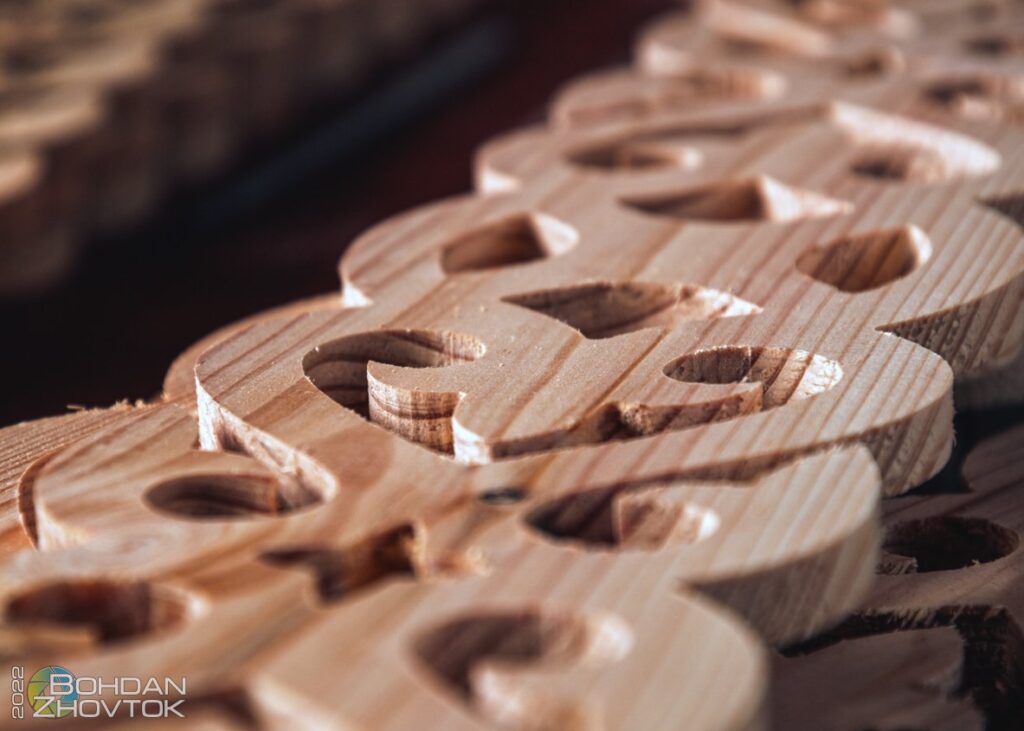

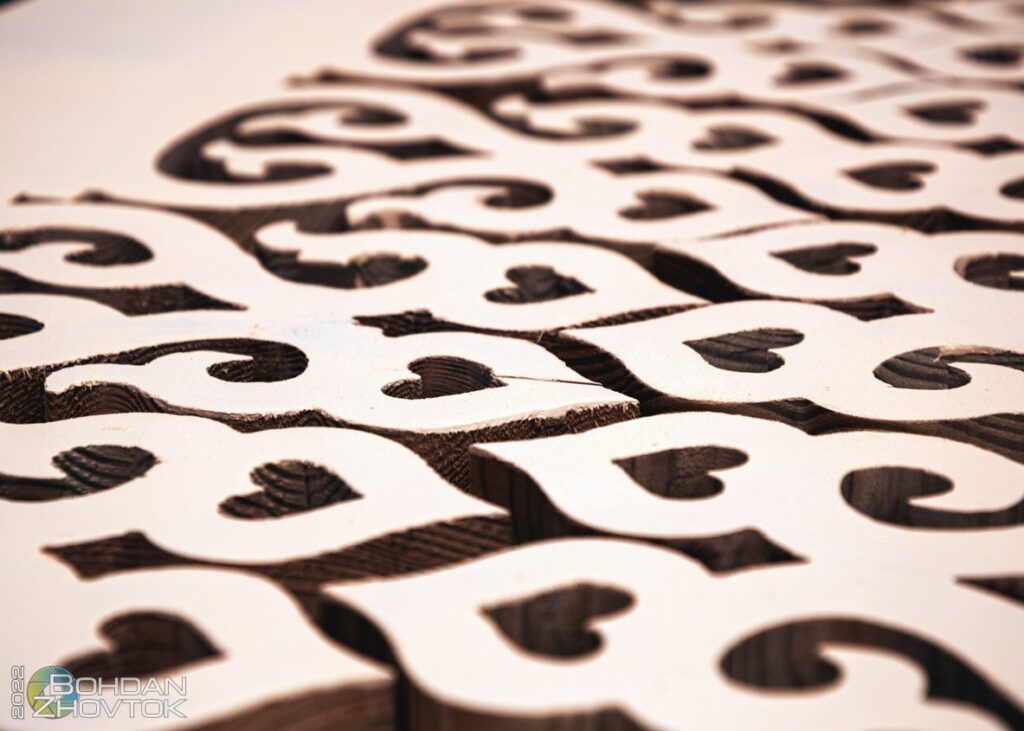

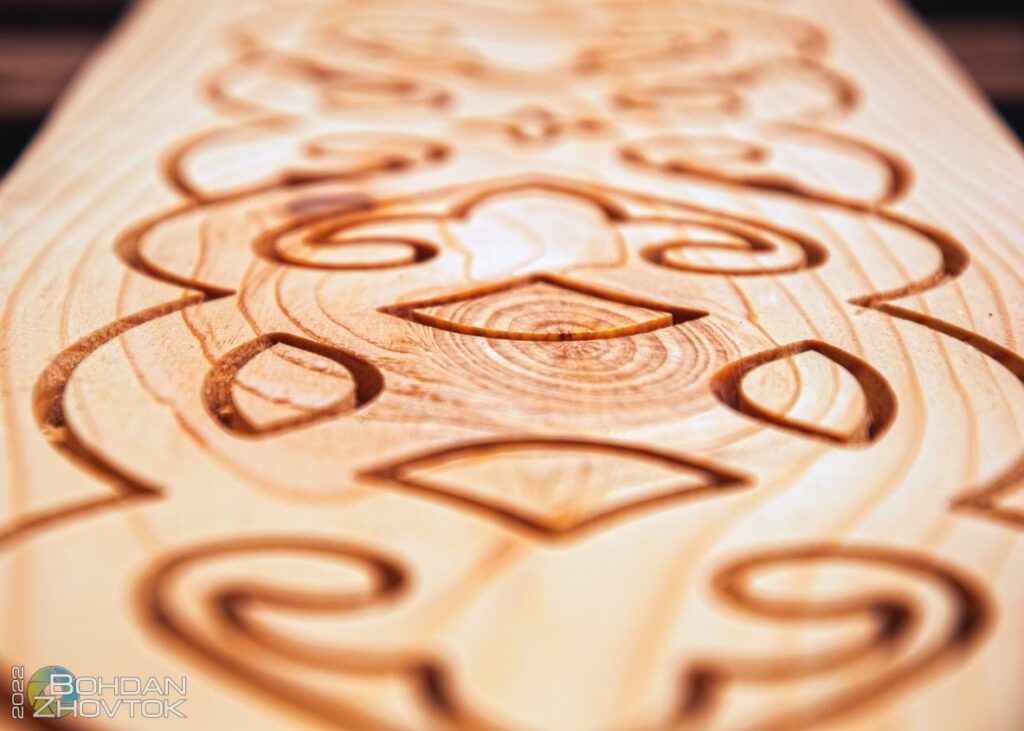

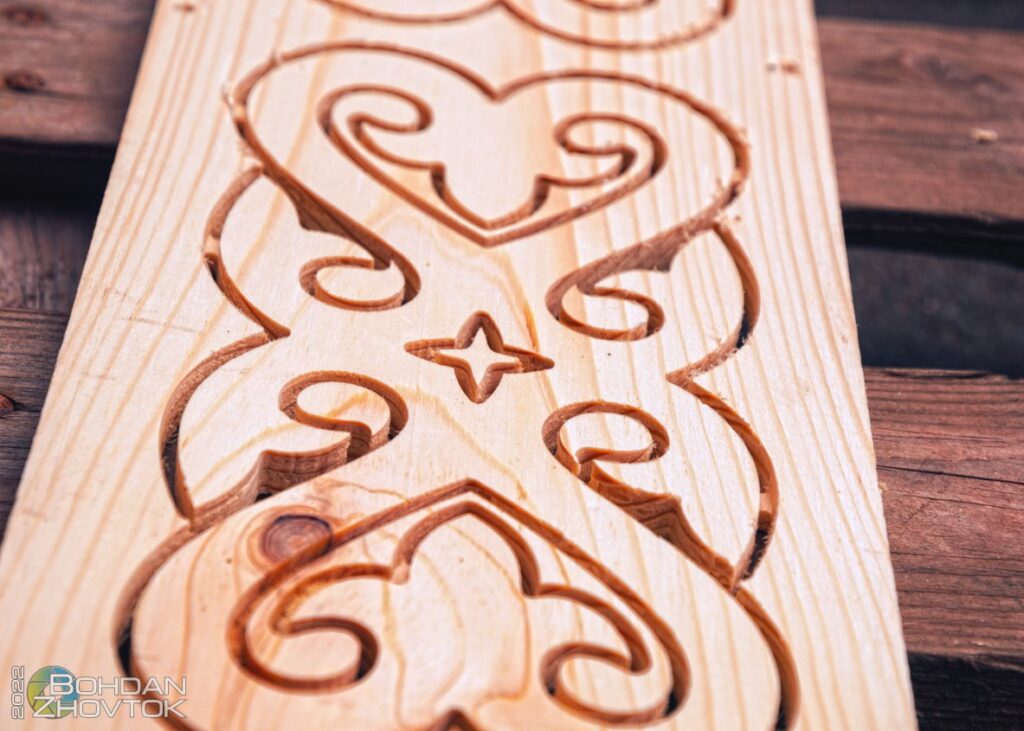

“Being selfish is not good. Well, it’s really not cool: when you’re a self-centred bastard who only talks about yourself, what interest do you have for the people around you?”
– I want to talk to you about volunteering as a concept. You have been in this field for a long time. How did you come to this mentally?
– I don’t know, I think it’s upbringing. Basically, I was hooked up on volunteering at the age of 16. I studied in the United States, lived there for a year, and volunteering was an obligatory aspect of my program. That is, I had to work a certain number of hours for the community in which I lived. In any way. I chose what kind of volunteering it would be. I got hooked up on it pretty quickly; there is a thrill in it. When you help people, do something for them, you get great pleasure from it. And in that year, I worked for more hours than I needed to work, at the same time, on completely different projects, and they were in no way related or similar, and I have not left this business since I was 16 years old.
– Let’s explain to our readers what pleasure can be derived from volunteering and why it should be done.
– A rich person is not one who has a lot, but one who gives a lot. And in this, you really feel a thrill because over time you have many friends whom you once helped sincerely, and these people become your companions in your lifetime or at least for a long period of time. Not just out of some sense of gratitude, responsibility, or debt, but simply because when you help someone, you become closer to that person. That’s a thrill.
I don’t know how to explain it otherwise. Being selfish is not good. Well, it’s really not cool: when you’re a self-centred bastard who only talks about yourself, what interest do you have against the people around you? What kind of relationships can you build with people if you are only interested in yourself?
And if you sincerely devote yourself to other people to make their lives better, that’s a thrill. In this case, you develop and the people you help do so. And then it goes like a snowball. There is a cool American movie called Pay Forward, the essence of which is that you do something good to others, so that person then does more, more, more good things to other people. In this way, it seems to me, any society develops that has satisfied its basic needs and exists to make its life richer, cooler, and more diverse.
– Have you never thought that altruism is hypertrophied egoism?
– Of course, it sounds cool. I won’t argue that helping others you derive pleasure, and it satisfies your own ego to some extent. You think: look how cool I am. And that may be true. That is, it can be the motivation of certain people to do something for others and for themselves at the same time; in order to assert themselves in this way. Or, on the contrary, to assert oneself before others. It is about the sincerity of each individual.
– Restoring the cultural and historical heritage in your hometown is extremely important. How can you convey this to people, to children, in simple words? Why is it important to invest your time and money in this?
– I always say the same thing – I don’t know how else to give a good, vivid example. Ukraine is Europe. The question is what part of Europe, but it is Europe. With its undeniable great heritage, with a lot of monuments, both tangible and intangible. And then we approach the issue of people’s perception of this heritage. And whether they appreciate it or not. For some reason, our compatriots go to France, Spain, Italy, or Greece. And then they admire how cool and well-maintained everything is there and wonder why it is not the case in our country.
The only question “What is it not the case in our country?” has two simple answers: a) nationwide or municipal leadership and decision-making at these levels to introduce certain restrictions or requirements for the preservation of certain tangible and intangible heritage landmarks; b) personal upbringing of people, their perception of beauty and desire to invest in it.
For some reason, in my opinion, without intending to insult Ukrainians, it seems to me that we are still a little young. Different nations conventionally have different ages, not in terms of a century, but as a young child, a teenager, a formed adult. And Ukrainians, this is not my own opinion, but the opinion of psychologists, are not yet adults as a nation. And that’s why we often wait for someone to do something for us. Perhaps this is the negative legacy of the Soviet period, when everything was common, but not my own, and, accordingly, the state should take care of it, and I would not meddle with it.
But in more mature societies personal responsibility has always mattered. So it seems to me that if Ukrainians are able to explain why they go to Italy, France on holiday, to see Notre Dame or the Leaning Tower of Pisa, or something else, because it is history, it is cool, it is beautiful, it is architecture, so why are they blind when they come to Chernihiv and do not notice the cool monuments of our local architecture? Chernihiv, Chernivtsi, Kyiv, Poltava…
The only question is that people should not forget that these are the same things, they are just geographically located in different places, and that someone over there took care of it, otherwise it would not have been preserved. Someone has to take care of it here too. And they should: a) create a public request to the municipal authorities; b) do something about it too. At least when voting. Ideally, with their money and hands.
“Education of new generations will give a stronger impetus to recovery than stacking bricks next to each other.”
– Let’s talk about the renaissance of Chernihiv. It is clear that during the active hostilities we suffered colossal losses and now there is such a mad impulse to revive our city. What, in your opinion, should be changed and revived first of all?
– I will answer a bit in an abstract way. It seems to me that it is necessary to revive education and upbringing in general within the family, society, and schools. Of course, if we speak very specifically, everything that we have lost must be rebuilt, and as competently as possible, involving experts, who understand this, and urban planners, who will be able to restore something, making it better than it was. It is important.
But let’s look far ahead into the future. The question is how to maintain this sustainable development, maintain people’s attention, and their willingness to take part in these urban processes. Because the issue of restoration is not a matter of one year, two, or even five years. It depends on the amount of money for sure, but let’s be honest, it will hardly last for two, three, or five years until we reclaim at least Chernihiv that we had eight months ago.
So I think we should start with education. From raising children… It will sound pathetic and patriotic, so that children understand the value of things around them from an early age. The value of life is not in iPhones – it consists of common public achievements, personal values, and helping others. And if children grow up, the schoolchildren who are in the 8th – 9th grade today will be students in five years, and students are a very active force. Students can form their own initiatives, support existing ones, participate in student youth self-government, and slowly influence city policies, including national policies. And this education of new generations will give a stronger impetus to renaissance than stacking bricks next to each other to restore the area existing before February 24.
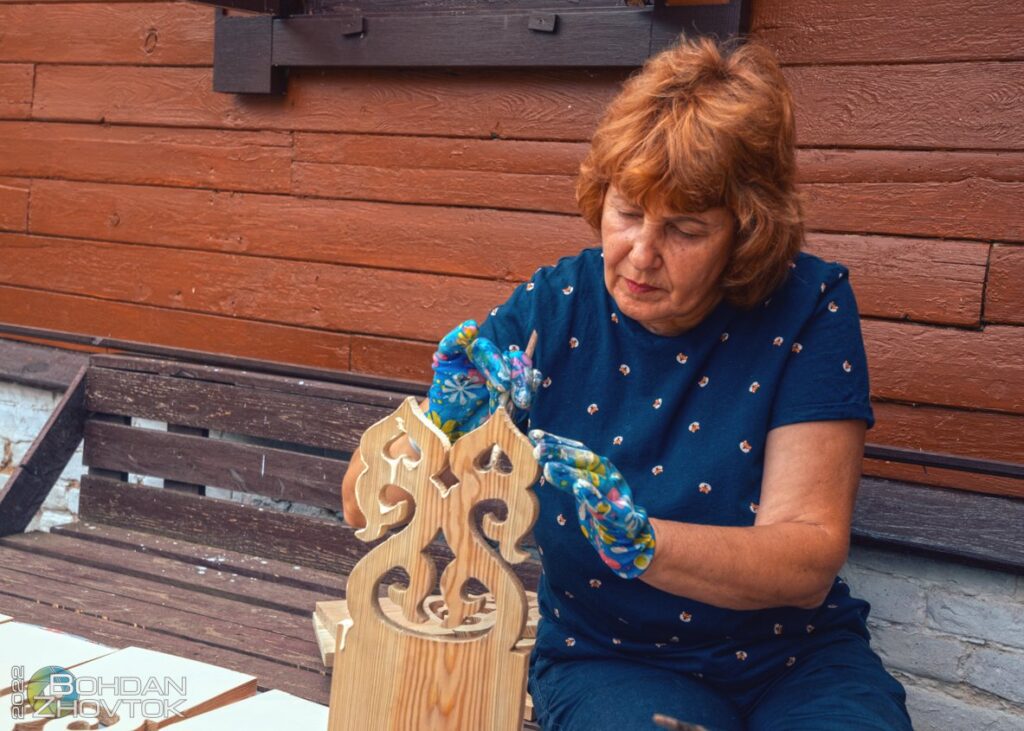
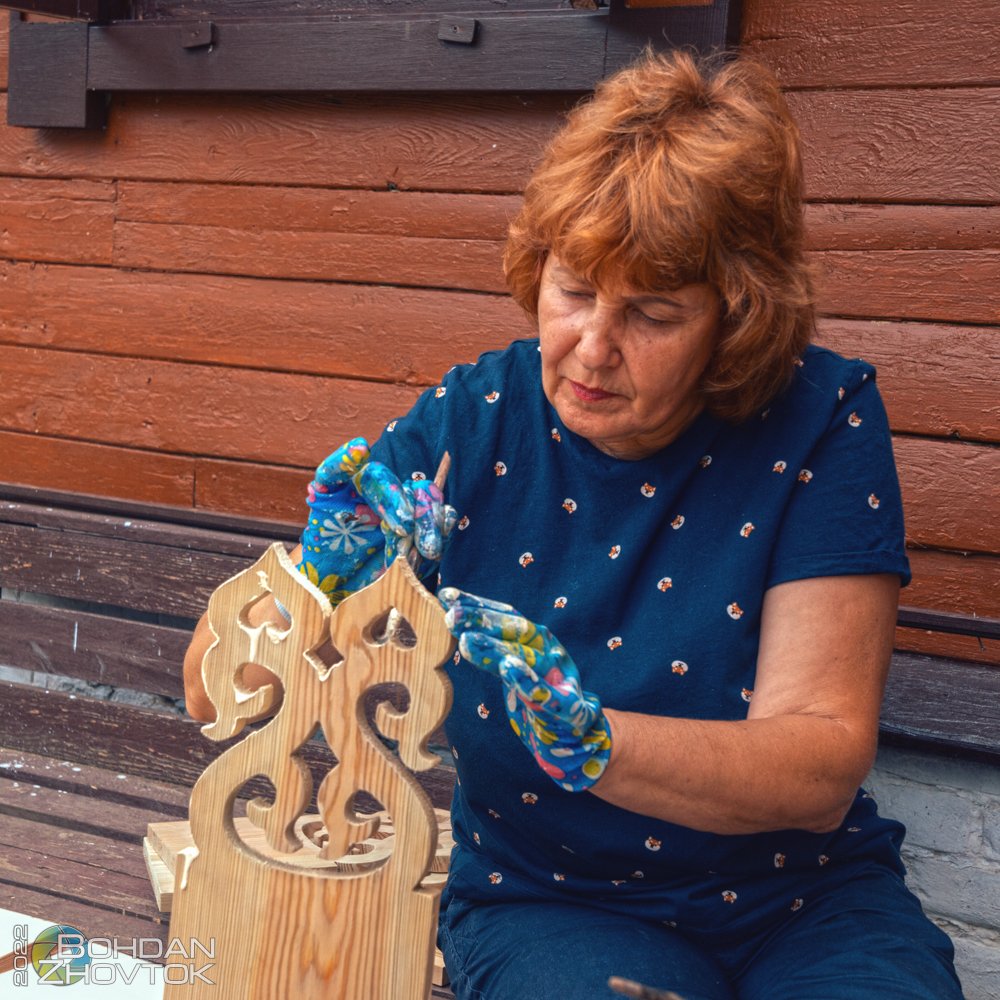
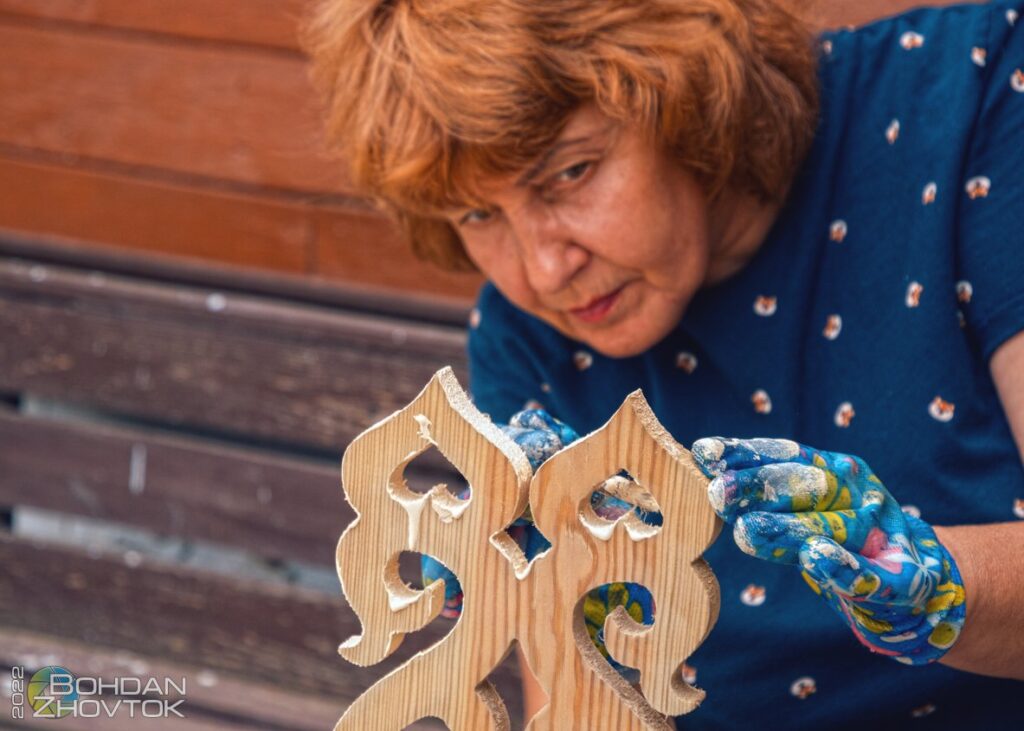
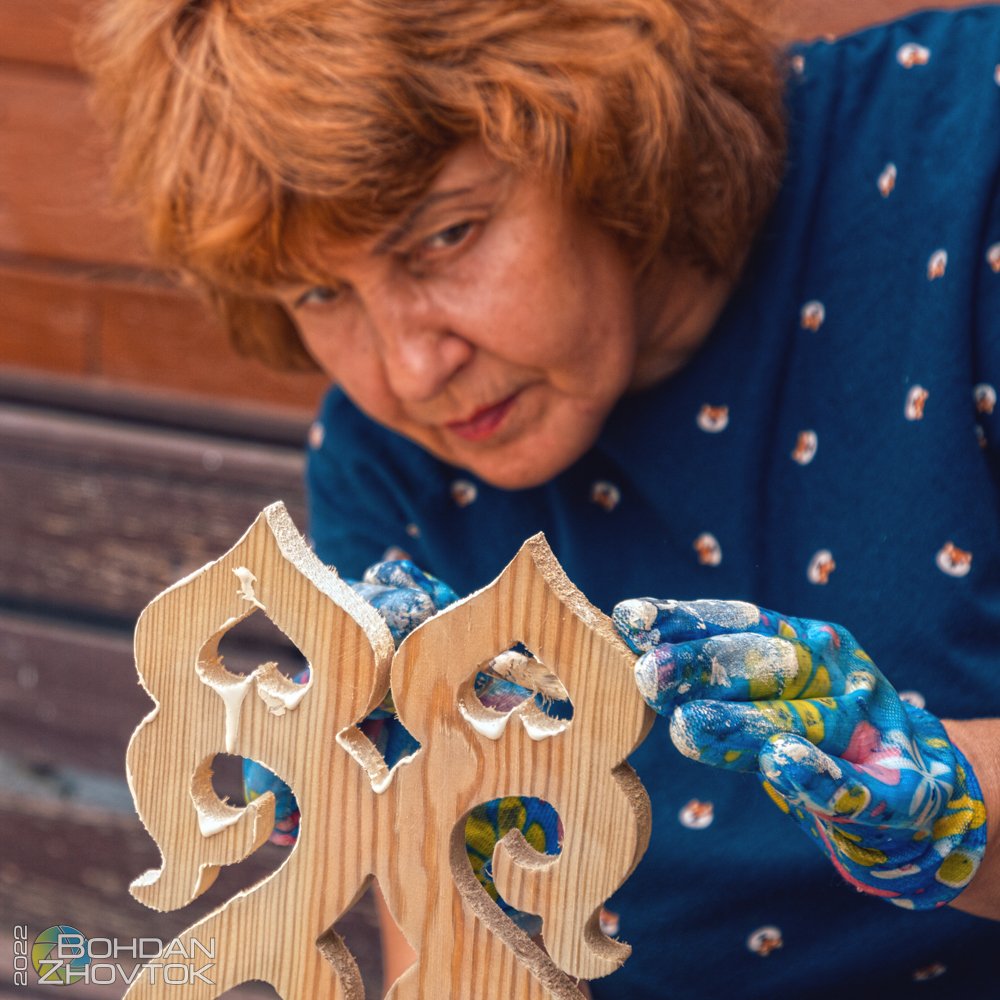
– How are you ready to join the field of education and be helpful in this matter?
– In general, I have been involved in the field of education before. I don’t know if it still exists, but there was a program at the Ministry of Education, when during the summer holidays they helped children learn, for example, foreign languages. Extracurricular language camps were organized during the holidays, where people who knew foreign languages at a sufficient level to teach them to schoolchildren were invited. And this was done primarily for rural communities. I took part in this, teaching English and German in one village in the region.
– In order to join the Wooden Lace project as a volunteer, what should be done and can everyone join?
– Everyone can join, write or call me saying “I want!” That’s all.
– Maybe you need some specialists in your team? With specific skills for the project development?
– We welcome joiners to our team with great pleasure. If there are people who are willing to work for free for the benefit of other people, it is important. The problem is that this is purely specialized professional knowledge that people get paid for. If they are ready to devote part of their time and knowledge to free work for other people, from whom they would otherwise take money, but in the context of a volunteer project they are ready to do it for the benefit of the city, then I welcome woodworking specialists because this is what we do. It can be difficult to often restore the same window sashes; it is not about just taking a board and carving some ornament there. There are 2D carvings, you just need to take a board and saw a pattern there. However, there are 3D carvings with some three-dimensional flowers and these little hands can’t do such work at all. And we need people who know how to do it professionally and in a quality manner.
– What is your ideal Chernihiv?
– I would say that this is Chernihiv, first of all, where people are as friendly as possible and respect each other. It seems to me that respect for others forms a solid foundation for social development. And this is a city of active people. And this is a city where the city government is not a remnant of feudalism, but where the mayor and councillors are absolutely normal, no different from other people who also travel in minibuses, in these damned Chernihiv minibuses, which we must get rid of as quickly as possible and replace with normal modern transport. And they will also use this transport and, accordingly, hear people, see problems; who will not be afraid to walk around the city all the time; who will ride a bicycle and, accordingly, understand that the infrastructure that was built in Chernihiv is, to put it mildly, a little weak, in some places even extremely weak. Well, that is, this is a collective question. The issue is complex: concerning ordinary residents and their upbringing and values, and concerning the city government, which must be at the same level as residents in order to really understand their problems and needs and solve them as efficiently, effectively, transparently, and honestly as possible. It is important.
– How does the Wooden Lace project help restore Chernihiv?
– Our project, I emphasize, is not mine; it is the project of a team of 25+ people who, like me, admire wooden houses and Chernihiv in particular. Well, it seems to me that we are preserving that historic Chernihiv, which today they have been trying to replace with hi-tech features for a long time. Well, that is, they covered it with some kind of white brick; you, let’s say, walk around Chernihiv, and the further you go, the less Chernihiv differs from other post-Soviet cities. But if we can preserve at least this wooden architecture that distinguishes Chernihiv from Poltava, Cherkasy, Rivne, and Zhytomyr, then when people come to Chernihiv, people will feel their history. History is not only in churches. History is, as it were, in everything else that surrounds us. “Wooden Lace” is struggling to preserve the historical appearance, so that people who live in wooden houses, and in general, who just live in the same house, communicate with each other.
It’s not good when you don’t communicate with each other, build these walls between you, and even when you approach some kind of restoration of your own facade – insulation, just painting – talk to your neighbours, raise money for the paint, do it in the same way, don’t divide the house that should look holistic, into pieces, because later it will not look like a living space, but like a chicken coop. That is, you have a house, as is often the case in Chernihiv, and there are three families living there. It was wooden, then one owner covered it with foam plastic and painted it pink; the other owner covered it with beige siding, which got covered with dust a year later, and no one cleaned it; the third owner left it shabby wooden, which anyway if they paint it later, it will be grey-brown-crimson. And then you look at it and you wonder “HOW IS IT POSSIBLE?” And we solve this problem.
If we restore the facade of a house, we talk to all the owners because we will not do one small piece of the house so that everything else remains the same. We need to talk to everyone, agree on the same colour range, and we restore the integrity of architectural landmarks, this is important. And how do we help Chernihiv? People’s attitudes are changing. People smile when they walk past the restored houses and think, “Cool! I can also do something.” When they pass by and see such a group of “Wooden Lace” sectarians, who day and night paint, scrape and make something cool, renewed, and historical out of old things that no one has ever paid attention to. I heard many times the phrase: I discovered wooden architecture thanks to “Wooden Lace of Chernihiv”. I used to walk around the city and did not notice it, but now I walk and notice it.”
– Have you ever thought about creating an exhibition? About laying cobblestones near the houses that are nearby, installing a bench and a lantern there, and simulating a return for 100 years?
– More than once, and this idea has been in the air for more than one year. It’s just difficult to implement for several reasons. Let’s start with the most basic one. We need a part of the street where, preferably from both sides, not just one, we have a number of historic buildings that need to be restored to create such a site. Nothing like this has survived in Chernihiv. There are several places where this could be done theoretically.
There are parts of Kotsiubynskyi Street, the area near the Kotsiubynskyi Museum, which are more or less good for this. There are parts of Khlibopekarska Street, where the shipbuilding is located, and the intersection with Magistratska Street: Magistratska, Khlibopekarska, Remisnycha, and Kniazia Chornoho streets. In principle, this quarter and adjacent quarters are more or less suitable for this. Piatnytska Street is also a good option, but all the houses there are of the same type, it is not a wooden lace, although, in principle, I don’t care. If necessary, we will also take care of brick houses. But you need to: a) find a place; b) really spend a lot of time on it. And to receive a “yes” from many people, not only the owners, but also the city authorities. And this is a separate issue. Those benches and the improvement of the territory, all of them take time and require money. It can be done, but it is a rather large-scale project that requires more resources, longer planning, and much longer implementation. This is not a question of one year.
“Some people adore today’s authorities because “something is being done in the city”, while others do not agree with certain decisions, including the funds allocated for their implementation.”
– Are you planning to run for office, to become a politician?
– No, I’m not. I once thought about it. Not in the context of “yes, I have to” and “what if I …?”. My ex-girlfriend said that if I became the mayor of Chernihiv, I would be killed the next day. Probably not the next day, but I agree with the thesis: maybe a month later. Because if you run for office, then you should run as honestly and correctly as possible and not make compromises with corrupt officials and conclude all these back-door deals that we still have. So no, I don’t think about that. Sometimes it seems to me that I could go to a village. By the way, it is not a fact that it should be located in the Chernihiv Oblast. There are other regions of Ukraine that I like more than the Chernihiv Oblast in terms of their landscape, and I could settle down in the village there. Accordingly, the smaller the scale, the more influence you can have there, bringing life, energy, and effort to small communities, by charging other people. Your influence and your contribution are more noticeable.
– Why do the authorities reject the project, how do you think?
– I think that the authorities have specific personal business interests in certain things. It seems to me that the people in power are not those who understand what real city self-government is. That is, it is not when you are a feudal lord, a local king, but when you really work for people and do not isolate yourself from them. I am very glad that Vladyslav Anatoliiovych goes out and walks around the city without bodyguards, but this is not yet the level of immersion in the society that you manage as the mayor, to talk about the fact that this is a truly European, civilized format.
Plus, let’s not forget that there are a lot of purely Chernihiv cases when you start some work on the site earlier, before the tender ends. How do you find it? Until we eliminate such problems, the answer to the question “What’s wrong with the city authorities” will be obvious. When will the same companies stop winning the tenders all the time, too? This is not due to the lack of competition; there is enough competition, not only in Chernihiv but also outside Chernihiv, but somehow it turns out that usually, the same company builds roads in our country, the same specific entrepreneur is engaged in the restoration of some places…
– Well, look, it’s logical, you can run for office and really change something, but you don’t want to. But why don’t you want to? Don’t you believe in yourself? Is this a high-toned attitude? What is it?
– Let’s rewind your sentence to the moment “you don’t want to” because you don’t know. Because we tried to. We tried to when we were restoring the Alley of Heroes and the lower part of Val, what is called Kotsiubinskyi square, along Preobrazhenska street. We went together with city activists, you know many of them. Serhii Bezborodko, Olia Palkova, Sasha Bondar, Vova Pylypenko, and Lesia Fedorenko – there were many of them. There were a dozen of us there, active, handsome, beautiful, young and apparently intelligent. We questioned the estimates of these projects and the solutions that were proposed there and were approved by the city authorities.
For two months, this team of good, intelligent young people went to the mayor, met with the mayor, his deputy, with groups of designers and talked about the correctness of some decisions that were agreed upon within the framework of the reconstruction of the lower part of Val and the Alley of Heroes. And we questioned a lot of things from different points of view. From the design, architectural, purely user perspective.
First, we managed to have public hearings, which are never held in Chernihiv for some reason, although they should often have been. We held public hearings, where our opponents brought a lot of administrative staff, who did not act as a speaker in any way answering questions, but simply surprised us by voting “against” at the end en masse. And after that we raised an uproar, many people reposted, listened to, showed dissatisfaction, and finally we were invited to go and talk.
And for two months we talked and made common decisions, it was normal, in a human way, and the mayor, his deputies, and designers talked with us normally; everything was fine. And a number of agreements were reached. If I remember correctly, we signed a memorandum to make some changes to these projects.
And what do you think? When everything was put into practice, it turned out that we were simply deceived. Two or three changes were made, but not the list we agreed on. This is despite the fact that it was quite visible. When you say: “You don’t want to do it…”. Well, I want to, and I’ve tried to, but the question is also about trust. I will tell you honestly: as a resident, I simply do not trust the current city government. This is my right. It’s cool that we live in a normal democratic society, if I can say so. Someone adores today’s government because “something is being done in the city”, while someone does not agree with certain decisions, including the funds allocated for the implementation of certain decisions.
– I remake the question. If you were in the government, it would be difficult at first, but then it would become easier. So why don’t you run for office?
– I do not run for office because I have a purely personal answer to this question. I live – if we do not take into account the wartime, if we take into account the time before the war – a very free life. I rarely stay still, I travel a lot, and I move from place to place not only within Chernihiv, but also within the country. I go to other countries where you can live. Thanks to my job, I can afford it. I don’t want to tie myself to Chernihiv. Perhaps in some other period of my life, I would be ready to do this, but not today, having such a high level of freedom. Again, outside the wartime, I like that kind of life.
– Has the full-scale invasion affected the Wooden Lace project?
– It had a direct, very, very direct impact. Now, many team members, including me, have less free time to do this. As simple as possible.
So, despite my strong desire to continue working in this area, I do not have the opportunity to devote as much time to it as before. And in everything else, I try to give the time that I find to the development of the project, to move it forward, to come up with new ideas and to pass through 2022 into 2023, without stopping the project implementation.
– What do you dream about?
– Like any other person, I dream about a happy life, a family, and many children. This is if we are talking about me.
Yeas, it’s about your personal life.
– I also rejoice in the success of my friends and relatives, and for me happiness means that people around me are happy. I know that I can handle myself. And I will achieve my own happiness.
– And what is your own happiness?
– I would say that this is about the health of my loved ones, well, my health, this is a happy family, both the family from which I came, and my future family, and this is the maximum level of freedom for me to be able to make a bunch of my vivid dreams come true.
– What are the top three must-see locations in Chernihiv for tourists?
– Oh, it’s a difficult question. The first one is Val, the Piatnytska Church, which I like very much.
– Do you make a wish using a pebble? Do you put your hand up?
– Of course I do, I’m a Chernihiv resident, so naturally I put it on. I come, put my paw on a stone – that’s all, I did it, next. I do, and I like it. And the third is a difficult question. I would say that… well, it’s not part of Chernihiv, but it’s a way to feel the essence of Chernihiv, cross the footbridge and walk through the field. And the realization that you can be in a wild nature, in the field, among the trees, near the river within a five-minute walk from the city centre – the historical, business centre – that’s the thrill. Go over the footbridge – and there, somewhere opposite the beach.
– Who is Stas Ivashchenko? In three words.
– A 35-year-old guy from Chernihiv.
Prepared under the auspices of the Association “Independent Regional Publishers of Ukraine” as part of the implementation of the grant project “The Women in News with WAN-IFRA”. The views of the authors do not necessarily reflect the official position of the partners.
Interviewed by: Kateryna Ahiienko
Video: Anton Soroka
Author of the project: Victoria Sydorova
Makeup, hair: Avilova beauty space, avilova.bspase tel. 0 737 555 000
Master: Yulia Nadtochii yulia_nadtochiy tel. 063 563-00-86
Location: Chaikhana Kover cafe
